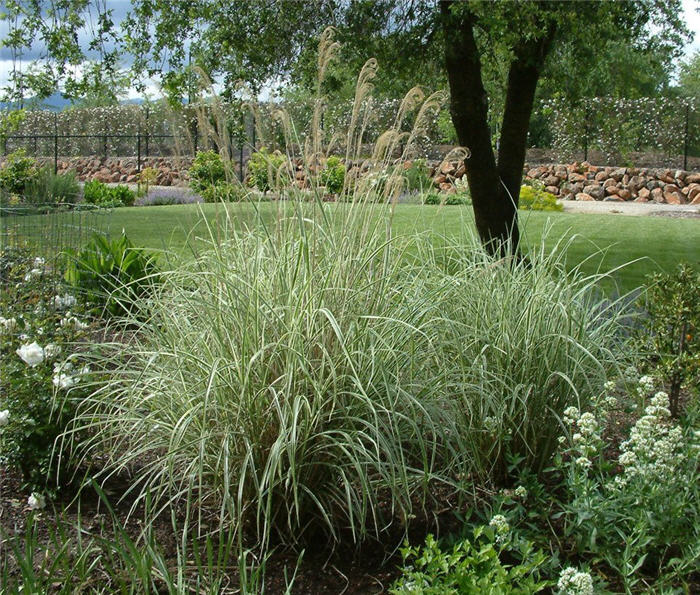| Botanical Name: Miscanthus sinensis 'Variegatus' | |
| Common Name: Variegated Japanese Silver Grass |

-
Anatomy
-
Culture
-
Design
Plant Type
Perennial, Grass
Height Range
3-6'
Flower Color
Pink
Flower Season
Summer, Fall
Leaf Color
Green, White, Variegated
Bark Color
n/a
Fruit Color
n/a
Fruit Season
n/a
Sun
Full, Half
Water
Medium
Growth Rate
Moderate
Soil Type
Sandy, Clay, Loam, Rocky, Unparticular
Soil Condition
Average, Rich, Well-drained, Moist
Soil pH
Neutral
Adverse Factors
n/a
Design Styles
English Cottage, Formal, Japanese, Meadow, Mediterranean, Ranch, Water Garden, Wetlands, Native Garden
Accenting Features
Showy Flowers, Specimen, Unusual Foliage
Seasonal Interest
Winter, Spring, Summer, Fall
Location Uses
Background, Perennial Border, Shrub Border, Foundation, Patio, Park, Walls / Fences, With Rocks
Special Uses
Cut Flowers, Screen, Mass Planting, Naturalizing
Attracts Wildlife
n/a
Photographer: JJ Neilson Arboretum
-
Description
-
Notes